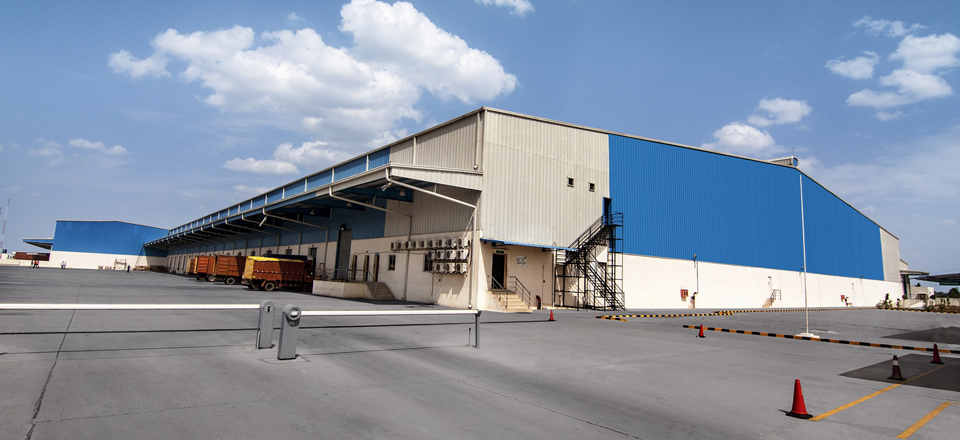Repeat after me … “Less is More, Less is More”. This is the mantra which should constantly be running through your mind like an earworm when you’re looking for ways to improve warehouse processes.
If that doesn’t work, try “Simplification, Simplification, Simplification” or … whatever helps.
The vital point is this: if you want warehouse process improvement, you need to eliminate complexity and get rid of steps which add no value to your goods or services.
Hands Off for Value
Most warehouse processes involve the physical handling of materials, part-finished, or finished goods. In these processes, complexity can be thought of in terms of touches; the number of times man or MHE comes into physical contact with inventory. Reducing touches therefore, is one of the most effective approaches to warehouse process improvement.
There are many ways in which you might remove the amount of times a pallet, carton, or other unit of inventory is handled.
Cross-docking is a typical example … Do all your inbound goods need to be unloaded, put away, picked and assembled for dispatch?
Consider for instance, whether some fast-moving goods might be left on inbound trailers, then unloaded when required and transferred straight onto your customer-bound vehicles.
This is the fundamental principle of cross-docking. While you might not be able to handle all your inventory in this way, cross-docking even one or two products will greatly reduce touches and speed up your warehouse receiving, replenishment, picking, and dispatch processes.
Or try drop-shipping slow movers … Perhaps you’re handling slow-moving products which with a little supplier-cooperation, your team might not need to touch at all. It’s always worth trying to collaborate with suppliers in a way that gives you sales revenue, while leaving the shipping process in their hands.
While your company will still be responsible for ensuring customers get their goods, drop shipping means you won’t need them to pass through your warehouse at all.
What better way to achieve warehouse process improvement than to eliminate the process completely, even if you can only do so for a handful of SKUs?
Moving Without Traveling
Another way to simplify (and hence improve) warehouse processes is to eliminate travel. While travel reductions often come as a side-effect of reduced handling, it’s not always the case. Therefore travel-time and distance are elements worth concentrating on in their own rite.
Your first priority in travel reduction should be to make sure your warehouse layout is optimised to keep distances traveled by fork trucks, picking trucks, and employees to a minimum.
If you have never carried out an optimisation project in your warehouse, it will probably be an intensive project with the need for some investment. However, payback times for such projects tend to be minimal.
Furthermore, depending on how much improvement is made, warehouse layout optimisation can generate substantial savings in the cost of labour as well as in asset-based expenses, such as fuel/energy and maintenance for MHE.
While on the topic of MHE, this is another area well worth looking into as part of your warehouse process improvement efforts. Replacing single-pallet ride-on trucks with double-pallet versions for example, can eliminate a lot of travel time and distance from your warehouse operation.
Technology for Warehouse Process Improvement
If you don’t have a warehouse management system in operation today, you’re not doing your warehouse team or your company any favours. The advent of cloud computing and the plethora of software vendors offering hosted solutions has neutralised cost as a barrier to WMS access, even for the smallest operation.
If you do plan to implement WMS (and you should), look for a solution offering features like task interleaving, which directs resources in such a way as to minimise deadhead travel within your warehouse.
Add-ons such as voice-directed picking and put-away can also reduce travel time and distance, and of course, if you have the budget, automated conveyors and other warehouse hardware can reduce touches to the barest minimum, while also lessening the risk of product/packaging damage and picking errors.
T … T … Try Another Mantra!
In so many cases, warehouse process improvement is a process of taking away, reducing, minimising, and simplifying. Certainly the removal of touches and travel will almost always serve to improve your warehouse operation, with technology-utilisation being the one thing you might want to increase.
So to conclude this particular post, I leave you with one more process improvement mantra to try, in case the ones from my introduction don’t help you to focus.
Ready? … Good—now repeat after me … “Touches, Travel, Technology; Touches, Travel, Technology” and remember, if it’s bugging you, I’ve done my job and you won’t have any trouble recalling your warehouse process improvement priorities.
